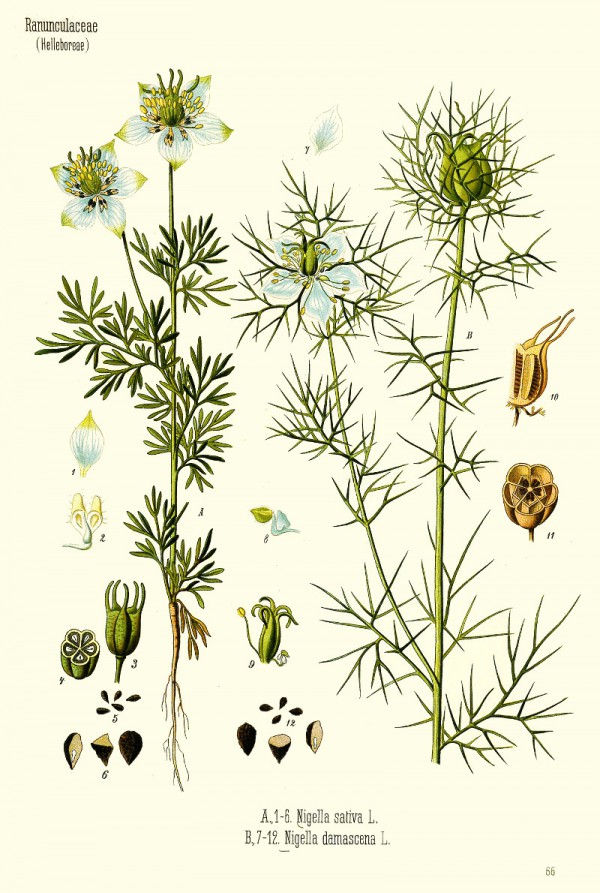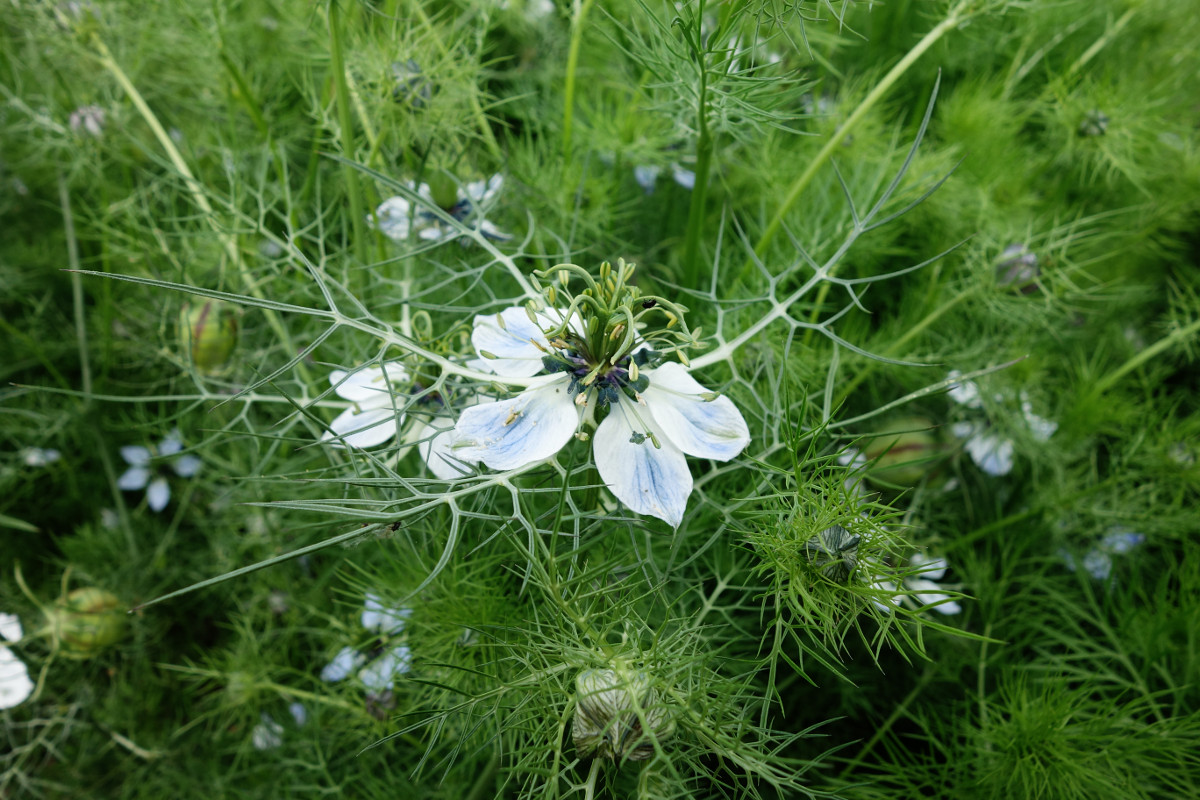Nigella damascena L. - Ranunculaceae - jack in the green, love in a mist, ragged lady, Damaszener Schwarzkümmel, Jungfer in Grün
Annula herb, up to 50cm tall, native to southern Europe, West Asia ('damascena' from Damascus), and North Africa; leaves alternate, pinnately divided; flowers blue, sometimes pink or white; fruit a inflated capsule, bearing numerous seeds.
„Nigella damascena is frequently cultivated as an ornamental and for dried-flower arrangements. It occasionally escapes cultivation and may become established… Most North American populations of Nigella damascena are represented by a mixture of single- and double-flowered (having supernumerary flower parts) individuals. Sepals tend to be larger and more variable in color than in Eurasian plants. Single-flowered plants usually have petals; petals appear to be absent in double-flowered individuals.“
http://www.efloras.org/florataxon.aspx?flora_id=1&taxon_id=200008022
Seeds and essential oil are characterized by the alkaloids (0.3-3.3%) damascenine (methyl 3-methoxy-2-methylamino benzoate) and methyl 3-methoxy-2-amino benzoate. The seed oil contained mainly sesquiterpenes, germacrene A (23.6-52.8%), β-elemene (38.5-49.6%), viridiflorene (0.3-9.5%), 7-epi-α-selinene (0.1-3.5%). Other components were (Z)-9-octadecen-1-ol (0-2.1%) and monoterpenes in trace amounts like α-pinene, β-pinene, myrcene, p-cymene, limonene, 1,8-cineole, γ-terpinene, camphor and pulegone.
[Essential oil of Nigella damascena L.(Ranunculaceae) seeds., Fico, G., Bader, A., Flamini, G., Cioni, P.L., Morelli, I., Journal of Essential Oil Research, 15(1), 2003, 57-58]
 damascenine (methyl 3-methoxy-2-methylamino benzoate)
damascenine (methyl 3-methoxy-2-methylamino benzoate)
„The volatile components in chloroform extracts and essential oils from the seeds of Nigella damascena and Nigella sativa were analyzed by GC and GC/MS. The volatile compositions differed in the two species: N. damascena contained sesquiterpenes, including a large proportion of β-elemene (27.7% extract, 54.7% oil) and methyl 3-methoxy-N-methyl anthranilate (30.7% extract, 12.7% oil), which account for the characteristic aroma of this species, whereas only monoterpenes, including p-cymene (49.0% extract, 47.4% oil) and thymoquinone (20.6% extract, 20.8% oil), were detected in N. sativa.“
[Volatile components of Nigella damascena L. and Nigella sativa L. seeds., Rchid, H., Nmila, R., Bessiere, J. M., Sauvaire, Y., Chokairi, M., Journal of Essential Oil Research, 16(6), 2004, 585-587]

Nigella damascena (right); Köhler, F.E., Medizinal Pflanzen, vol.3, t.66 (1890)
http://plantgenera.org/species.php?id_species=701477

Nigella damascena flower, CC BY-SA 3.0, Author: Andreas Kraska